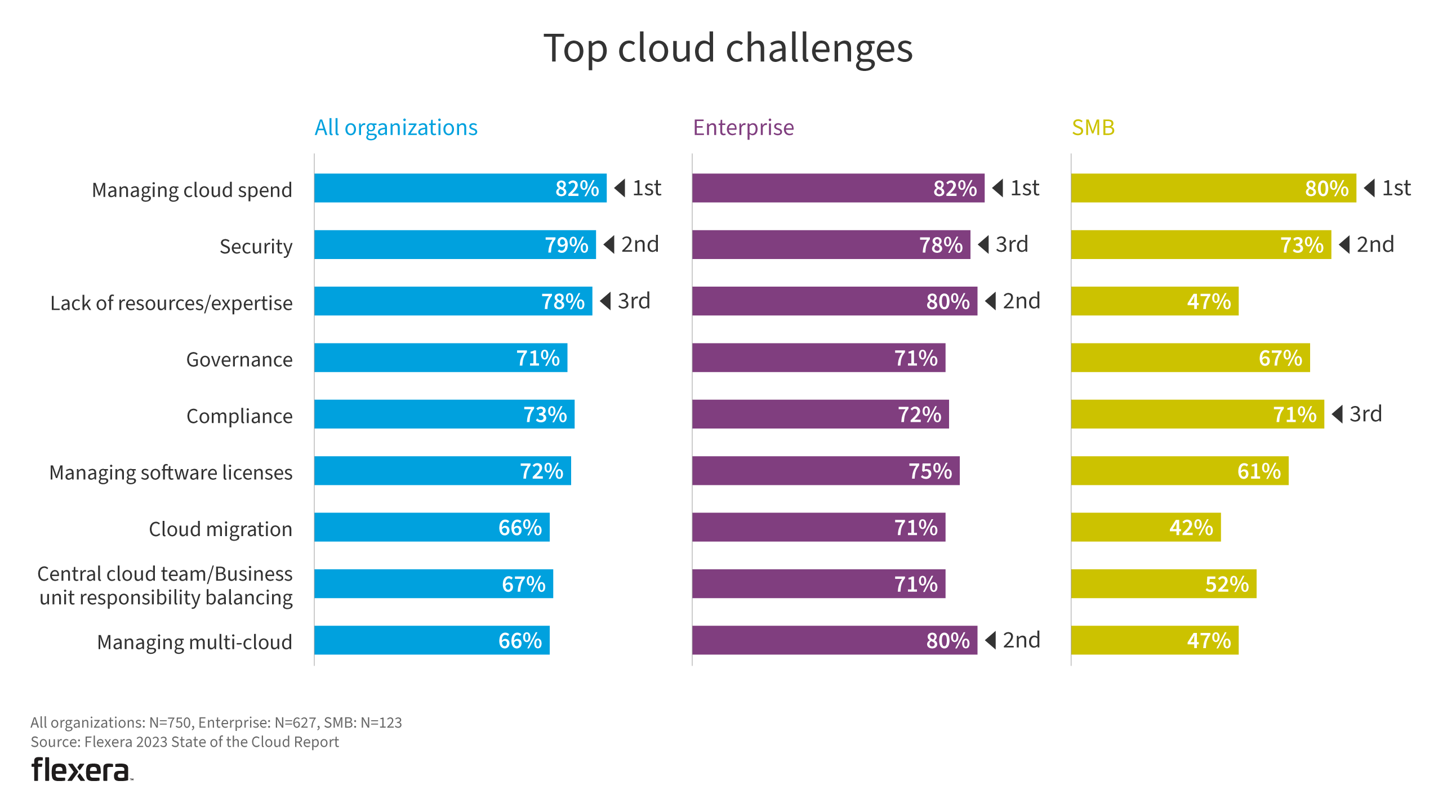A Deep Dive into Cyber Security: Safeguarding the Digital Era's Cloud

Cloud environments have become an important part of most organisation’s IT plans. With a projected value of $2,321.1 billion by 2032, cloud computing is heading for rapid growth.
More and more enterprises are relying on technology. Due to that, the threat of data breaches has also seen a significant increase. About half of all data breaches happen in the cloud, costing about $4.45 million on average.
The shift from traditional IT models to the cloud made past cybersecurity practices obsolete. It is forcing digital assets to be more exposed and vulnerable to breaches. For these reasons, enterprises need to use proactive and systematic strategies.
At Growth Jockey, we help businesses adapt to new-age technologies. We also help their growth in the changing marketplace. We assist them in protecting critical data while getting the most out of the cloud technology. This lets them stay ahead of the curve.
Cyber security Challenges Businesses Face in the Cloud Setup
Cyber security is a major concern for many companies when planning cloud migration. Many companies feel discouraged from moving their workloads to the cloud. A report shows that 79% of all organisations listed security as the top cloud challenge.

Some of the most common concerns about cyber security for the cloud include:
1. Data Breaches
Storing data in the cloud raises the risk of unauthorised access. This can lead to theft or loss of sensitive information.
For instance, the infamous data breach of LinkedIn profile in 2021 highlighted this. The breach affected 700 million LinkedIn profiles. It exposed their data to the dark web forum.
It included sensitive details of the users, like
-
Email addresses
-
Phone numbers
-
Geolocation records
-
Genders
While LinkedIn refuses blame for the breach, it shows how common these data risks are. This is a pressing concern in the cloud social networks.
2. Unsecured Interfaces/APIs
CSPs (Content Security Policy) often offer their customers application programming interfaces (APIs). However, a customer needs to secure this interface for their cloud-based infrastructure. Otherwise, it can give rise to security issues.
Cybercriminals can use the documentation designed for the customer. This allows them to identify and exploit listed methods. This, in turn, lets them access and extract sensitive company data.
3. Insider Threats
Employees often have access to sensitive data, and they may leak the details or use them with malicious intent.
Finding these malicious insiders on the cloud becomes a challenge for the companies. Due to the lack of control over their cloud infrastructure, traditional security solutions are less effective.
Further, cloud-based infrastructure is accessible from the public Internet. As a result, it often encounters security misconfigurations. As a result, malicious insiders are difficult to locate and go undetected.
4. Unauthorised Access
As hinted above, organisations' cloud systems vary from their on-site infrastructure and exceed beyond the network limits. The systems and networks on the cloud are reachable from the public internet.
While this ease brings convenience for everyone, it becomes an easy target for hackers to gain entry. As a result, they can access the organisation's cloud resources without authorisation.
5. Unintentional Cloud Data Leak
Data leak is a common issue among cloud users. A report shows that 55% of companies[1] agreed to have at least one database exposed to the public internet. Many of such databases have weak passwords or don’t require any authentication at all. It makes it easy for the threat actors to exploit such unsafe systems.
5 Best Practices to Achieve Cyber Security in Cloud Environment
To tackle all the above threats, businesses can consider following well-planned cyber security strategies. At Growth Jockey, we understand the importance of having a cloud system that is secure and trustworthy.
Let us understand what are the features of cyber security. Here, we have listed some measures to ensure data protection.
1. Cloud Encryption
The first step in protecting your sensitive data is cloud encryption. It involves converting data into a form that one can’t understand or access without a key. It uses mathematical algorithms to turn data into codes before transferring it to a cloud system.
Businesses can use encryption at various stages. This includes data-at-rest (stored data), data-in-transit (data moving between systems), and data-in-use (data being processed). To add security, they can apply encryption methods like AES (Advanced Encryption Standard) or SSL (Secure Sockets Layer).
2. Applying Multi-Factor Authentication
Let’s start with numbers. A study revealed that 88% of data breaches result from human errors. A similar report by IBM Security estimates this number to be 95%.
Using multi-factor authentication (MFA) can help avoid this threat. It can help secure cloud data and applications by adding an extra authentication layer using security questions, biometrics, or OTPs.
MFA asks for verification in cloud environments and gives administrators control over access. As a result, they can limit cloud apps or data access to just those who need it for their tasks, reducing the risk associated with lost or compromised login details.
3. Plans for Data Backup and Recovery
A data backup plan is a vital part of any cyber security strategy. Since losing data could lead to financial losses, companies can take measures for regular data backup. It allows businesses to recover from data loss events, reducing downtime and unavailability.
Apart from backup, an emergency plan to recover data during a disaster is a must for companies. Imagine a company’s staff member clicked on an unauthorised email. And it turns out to be a phishing attack, locking every system in the company. No surprise there; the hackers would demand a ransom to unlock the systems.
This is where a disaster recovery play helps to avoid losses and dodge these threats. The best cyber security companies in India know how to create and use an effective disaster recovery plan to return the company operations to normal.
4. Train the Employees
Employees have access to data, and training them allows businesses to avoid unintentional breaches. Companies must educate their employees on how to identify and respond to cyber security risks. It will stop hackers from getting access credentials for cloud accounts and services.
For this, firms can run a thorough cyber security awareness training for all staff. Help them understand the potential risks of using unapproved tools and applications. Making them aware of the risks and responsibilities with regular interactions on security practices.
Also, discuss the features of cyber security and issues like threat intelligence, data privacy, password management, and physical premises security.
5. Conduct Routine Penetration Tests
Penetration testing in a cloud environment allows companies to check and examine systems. Pen testing involves the following measures to prevent cyber attacks:
-
Collecting information related to the target for risk assessment
-
Identifying what services are running
-
Attempting to find any weaknesses within these services
-
Reporting on what results were found in the test
This way, companies can monitor and find threats, risks, and weak areas and improve the system.
Final Thoughts
Cyber threats will not fade away anytime soon. If anything, they will rise as the technology advances. Penetration testing, MFA, and cloud encryption are a few ways to implement cyber security.
In addition, test, monitor, and improve these strategies over time to secure your cloud systems. Invest time and effort to adapt to new technologies and tools as they emerge for more robust and secure systems.
At Growth Jockey, we understand the need to avoid risks to achieve healthy business growth. Embrace the right cloud security programs and let cyber security not be a concern for businesses partnering with us.
FAQs
1. Is cyber security part of cloud computing?
Yes, cyber security is a part of cloud computing services. Security has become a major concern in cloud computing due to the growing risks of privacy threats, hacking, etc.
Cyber security prevents several unwanted breaches in the cloud environment, from the storage system, network, and software to the data.
2. Who needs cyber security?
Cyber security helps protect computers and networks from unauthorised access or attack. Anyone looking to secure their data and assets from criminals, individuals, businesses, and governments needs cyber security.
3. What is cloud security vs cyber security?
Cyber security and Cloud Security are two solutions for complete security against threats and privacy breaches. Cyber security protects networks, systems, and programs, while Cloud Security protects systems in cloud-based platforms. In essence, cloud security is a part of cyber security.
4. What are the benefits of cyber security?
Cyber security is important because it protects your devices, data, and sensitive details from cyberattacks. It also helps you prevent online scams, keep your business in line with compliances and regulations, and protect your brand reputation. Further, it reduces the risk of cyberattacks and helps you recover from them.
5. What is the goal of cyber security?
There are three main goals of cyber security. These goals are:
-
Protecting digital information and assets from unauthorised access or damage
-
Ensuring data integrity
-
Allowing safe data transfer over networks








